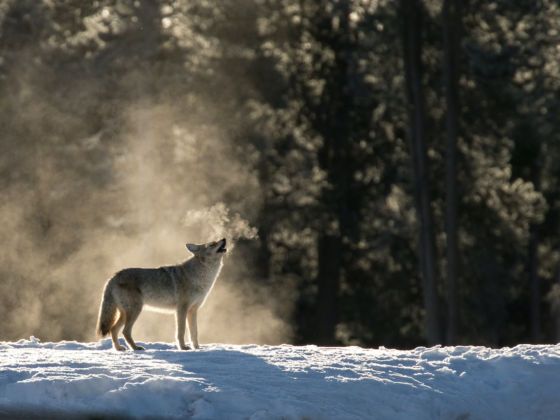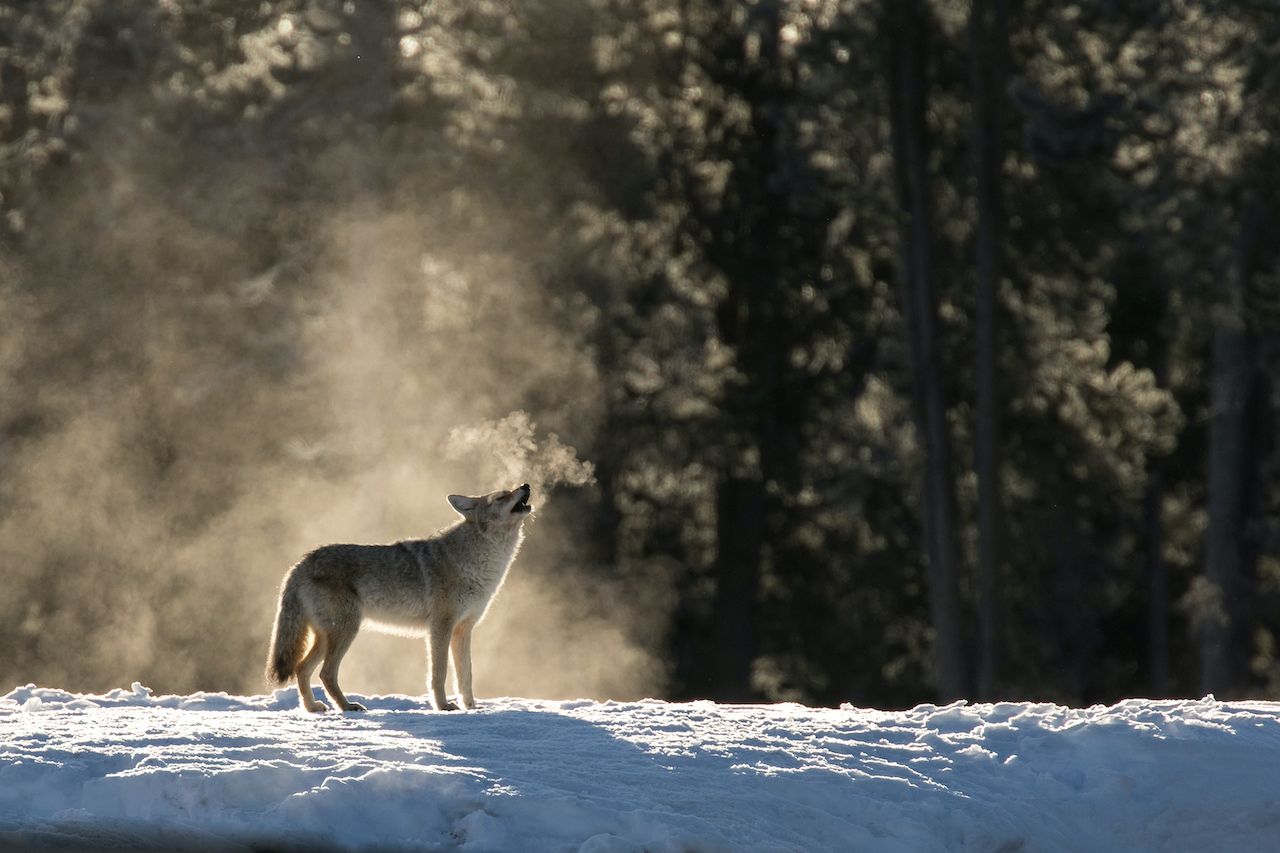SURROUNDED BY THE PEAKS of the Middle Rockies, Yellowstone, the world’s first national park, is a land of lava flows and fumaroles, mudpots, hotsprings, and half the geysers on Earth — all hinting at the 2.1-million-year-old supervolcano that lurks beneath. But it’s Yellowstone’s diversity and abundance of fauna that’s truly impressive.
Home to a compendium of species (big mammals, in particular) that reads like a Who’s Who of the Rockies, the national park provides protected habitat for hundreds of grizzlies and dozens of cougars, 15,000 elk, 4,000 bison, moose and mule deer, mountain goats, coyotes, pikas, and — perhaps most famously of all — the endangered gray wolves, reintroduced in 1995, who have changed not just the ecosystem of Yellowstone, but its actual physical geography.
“Thousands of tired, nerve-shaken, over-civilized people are beginning to find out that going to the mountains is going home; that wildness is a necessity.”
― John Muir, Our National Parks
To see these creatures in the wild is not just to reconnect with nature; it is to awaken a level of 360-degree awareness. Like a deer moving through the forest, when hiking in the hopes of seeing Yellowstone’s wildlife, body and mind become alert to every movement and sound, from the snap of a twig to the howl of a coyote.
The park is divided into five distinct regions (clockwise from the north): Mammoth, Roosevelt, Canyon, Lake, and Geyser Countries. Head to a ranger station to get the latest on recent sightings, and don’t let the presence of the park’s predators put you off exploring. Follow these safety tips, and if you’re not in a vehicle, watch animals openly where they can see you. Sneaking up on wildlife is scary for them — if an animal moves away or looks nervous, you’re definitely too close.
Bison
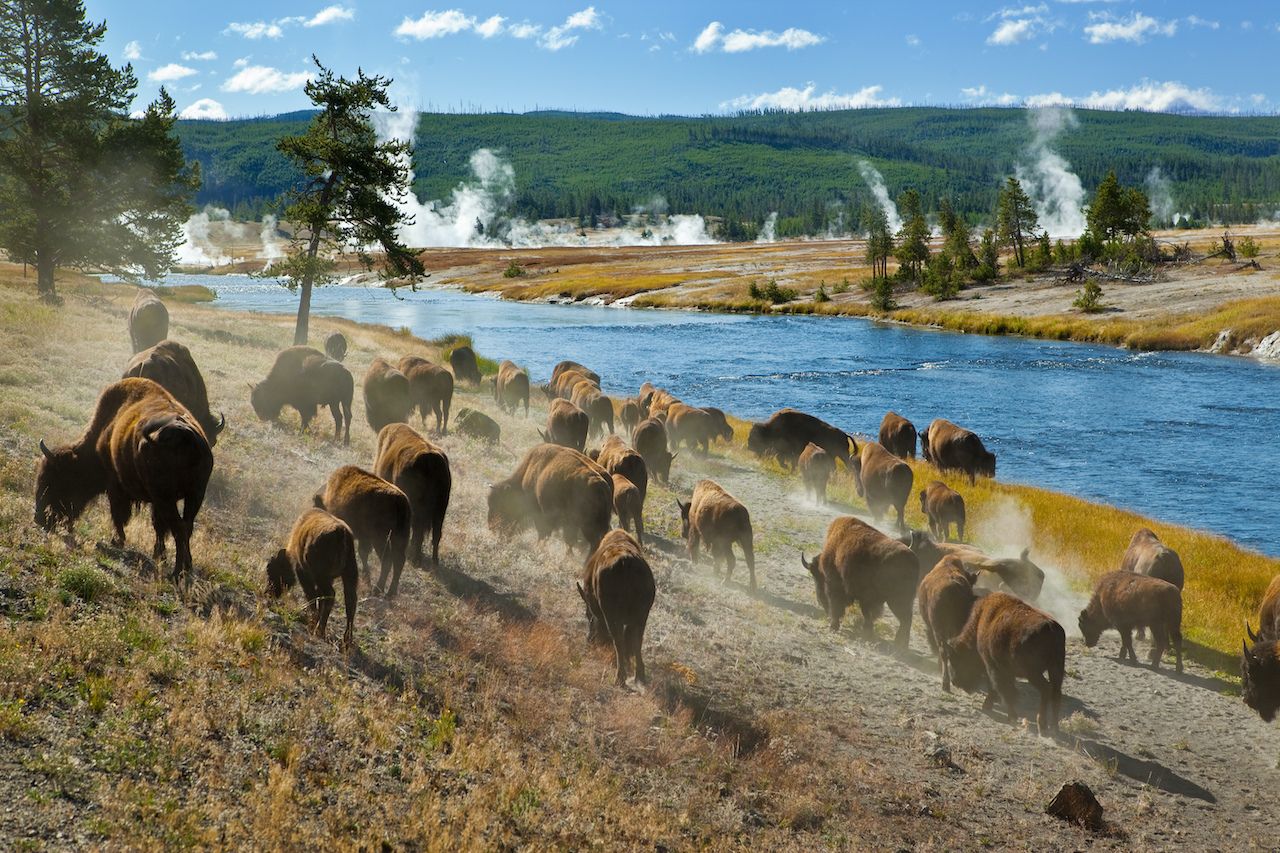
Photo: Lee Prince/Shutterstock
When: Year round
Where: Bison are everywhere in Yellowstone, particularly around geyser basins and in the Northern Range in winter. In the breeding season (late July through August), the north herd congregates in the Lamar Valley while the central herd can be seen in the Hayden Valley.
Numbers: Abundant; there are over 4,000 in Yellowstone.
Bison (also called buffalo) once numbered 30–60 million individuals in North America; today, Yellowstone is their last real stronghold, though the species is gaining ground elsewhere thanks to dogged conservation efforts. The largest native land animal on the continent, bison can weigh nearly 2,000lb — that’s twice as heavy as a small dairy cow. Easy to identify, bison are brown all over and shaggy from their very large head to their impressive shoulder hump. They feed mostly on grasses and wildflowers, and males and females only come together for the rutting season every July, when you’ll see bulls charge each other, knocking heads — not horns — for dominance over a harem.
Black bear
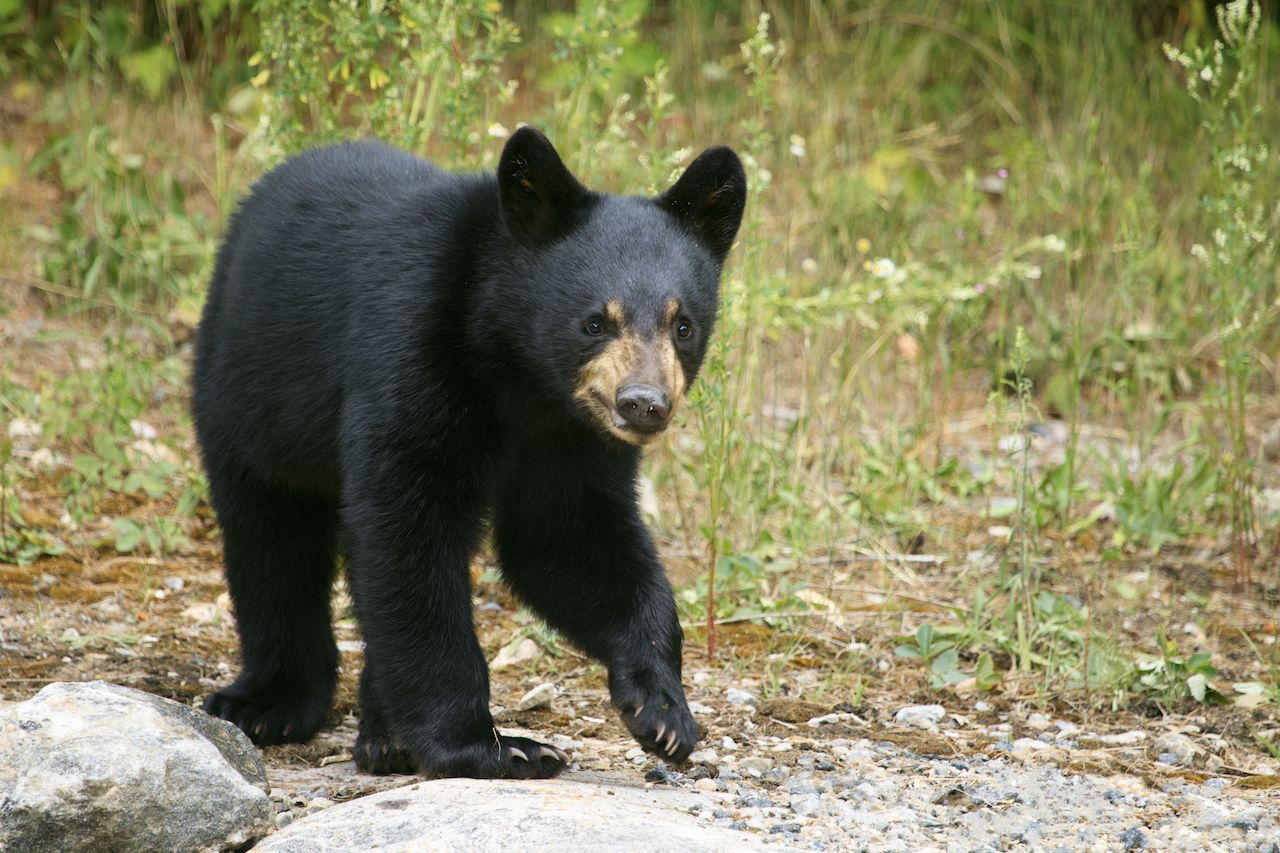
Photo: Christopher MacDonald/Shutterstock
When: Late March to early November (rising from their dens earlier in mild winters)
Where: Frequent in montane woods; quite common in just about any habitat that’s below the treeline; especially common on the Northern Range and in the Bechler Area
Numbers: 500-650
Surely it’s easy to spot the difference between a black bear and a grizzly: Black bears are black, right? In fact, black bears can have a light reddish-brown coat and grizzlies can be black. Size isn’t a predictable indicator either — a small grizzly can be smaller than a big black bear. So how to spot the difference? Well, black bears have smooth, uniform coats whereas grizzlies are so named for their shaggy coats covered in patches and streaks, often with grizzled white tips. Compared to grizzlies, black bears also have short claws, straight faces, and tall ears.
Black bears are active day and night, and even if you don’t see one on your trip to Yellowstone, you’ll likely see evidence of them. Take a closer look at the aspen trees on your hikes — are the trunks covered in deep black scars? Those marks were probably left by black bears climbing to escape wolves and grizzlies.
Grizzly bear
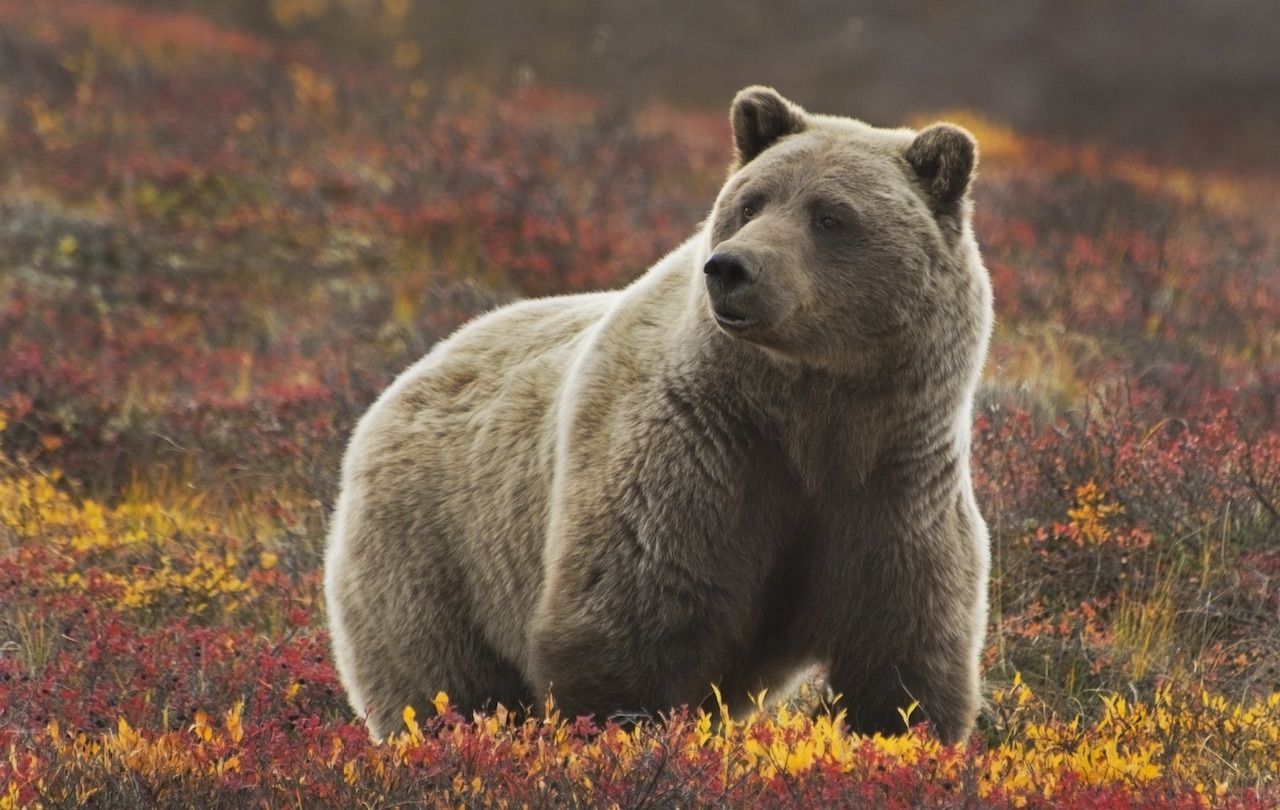
Photo: NancyS/Shutterstock
When: March to early November (rising from their dens earlier in mild winters)
Where: Usually low elevations in spring, and at or above the treeline in summer; often seen in the Hayden and Lamar Valleys, on the north slopes of Mount Washburn, and from Fishing Bridge to the East Entrance at dawn and dusk
Numbers: Approximately 150 with home ranges wholly or partially in park; 674–839 in Greater Yellowstone
The Greater Yellowstone Ecosystem is one of the few areas in the US where black bears coexist with grizzly bears. The latter have similar habits to black bears, but they’re more active in the daytime and they do more digging — hence those long front claws on their forepaws that stick out way beyond their fur, and that powerful hump of muscle between their shoulders.
Be bear aware: Pick up a canister of bear spray in town and follow best practices when you’re on the trail. But please, don’t worry about bears or let their presence keep you from exploring — wild bears nearly always move well away from oncoming humans. You just don’t want to surprise them. Practice hollering “Hey bear!” when you’re rounding trail corners; that way, any grizzlies should know you’re coming and be long gone by the time you get there.
Mountain lion

Photo: sumikophoto/Shutterstock
When: Year round
Where: Occasional in rocky breaks and forested areas at montane and subalpine elevations
Numbers: 26–42 on the Northern Range; others in the park seasonally. Rarely seen.
If you see one, you’ll know it. Also called cougars, pumas, and panthers, mountain lions are true big cats with fairly short tawny or gray coats and long, black-tipped tails. Solitary animals, they hunt from dusk till dawn, and only occasionally in the daytime. Feeding mainly on mule deer, mountain lions also prey on white-tailed deer and elk by surprising their target at close range. Though they can be dangerous to humans, incidents are rare and not something you need to worry about while hiking.
Gray wolf

Photo: Jim Cumming/Shutterstock
When: Year round
Where to see them: The best areas to see wolves are Lamar and Hayden Valleys at dawn and dusk.
Numbers: There are currently 13 packs totaling about 95 wolves in Yellowstone National Park, and 400–450 wolves in the Greater Yellowstone Ecosystem.
Hunting in packs of four to seven, sometimes more. Know how to spot the alpha? Just look for the wolf carrying its tail higher than the others. Some of the most intelligent animals on Earth, wolves primarily prey on elk in winter, but even adult bison can find themselves on the wrong side of those fangs.
Despite what the fairytales say, there’s no need to be afraid of wild, unhabituated wolves — there have been no attacks on humans in Yellowstone (though give them 100 yards of space). You stand a good chance of spotting the wolves if you dedicate a few days to the task, but to really appreciate the animals take a course with the Yellowstone Association, or go spotting with a guide. And if you’re in the Lamar or Hayden Valley on a crisp fall night, try howling out. You may just hear a wolf pack call back to you.
Moose

Photo: Szczepan Klejbuk/Shutterstock
When: Year round; most active at dusk and dawn
Where: Marshy areas of the park, including lake shores and along rivers; common in the park’s southwest corner, on the banks of Yellowstone Lake, in the Soda Butte Creek, Pelican Creek, Lewis River, and Gallatin River drainages, and in the Willow Park area between Mammoth and Norris
Numbers: Over 400
“Hunters will tell you that a moose is a wily and ferocious forest creature. Nonsense. A moose is a cow drawn by a three-year-old.” — Bill Bryson, A Walk in the Woods
It’s easy to see Bryson’s point.
Presenting a rich mahogany color quite different from deer and elk, moose can definitely look clumsy — bordering on comical — but the second-biggest indigenous land animal in North America is actually a really impressive species. Perfectly designed for Ice Age life in wet, cool country, moose are summertime loners, hanging out belly deep in the bogs and marshes where they dive for water plants to eat. And they can run up to 30mph! Through woods! As with elk (see below), it’s a good idea to keep well clear of moose during rutting season.
Bald eagle
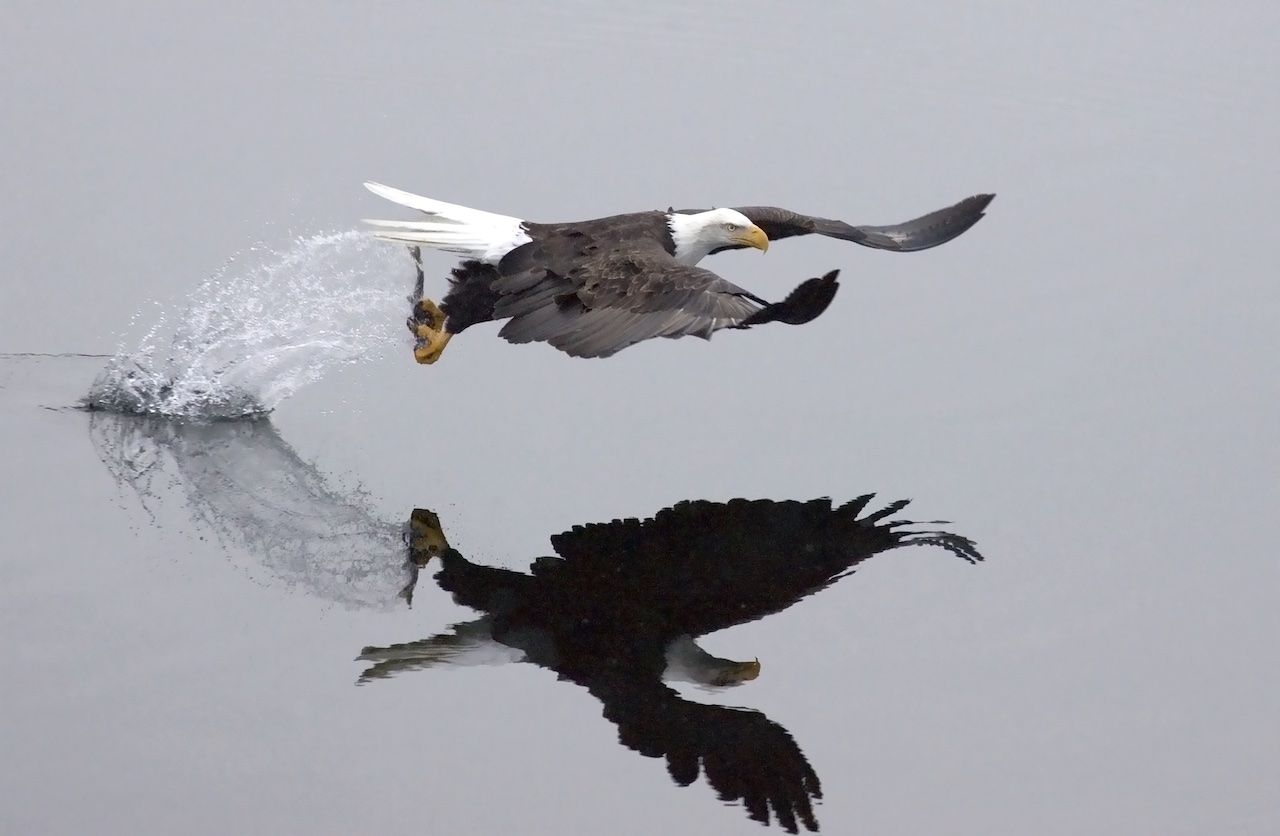
Photo: Shutterstock/Jeremy Johnston
When: Year round, but most abundant outside of winter
Where: In summer, head to Yellowstone Lake; in winter try the Gardner River. The Hayden Valley and Madison River are good places to spot eagles year round.
Numbers: Fairly common
Endemic to North America and the national symbol of the United States, the bald eagle is a huge, dark bird with a completely white head, neck, and tail. It stands 30-45 inches tall with a wingspan that can reach a whopping 7.5 feet — like most other birds of prey, the females are slightly larger than the males. One of 19 species of breeding raptor within Yellowstone, bald eagles are often seen near rivers and lakes where they feed on fish and waterfowl, but you can also spot them hunting rabbits and other small mammals in open country. In winter, they may be spotted scavenging on the carcasses of elk and bison.
Elk
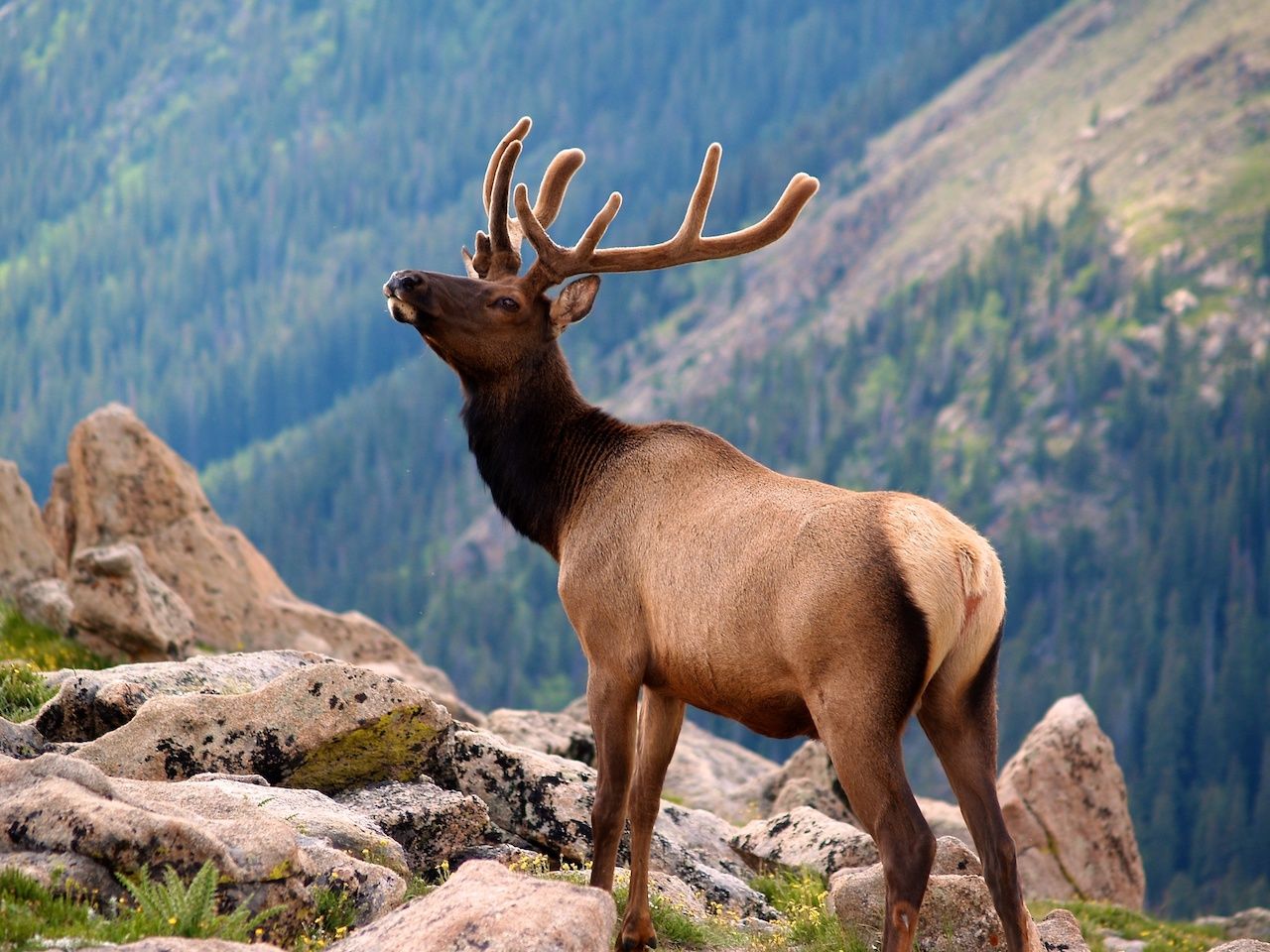
Photo: Alfie Photography/Shutterstock
When: Year round, but most impressive during rutting season beginning late August
Where: Summer above montane level in Gibbon Meadows, Elk Park, and Lamar Valley; autumn in the Northern Range
Numbers: 6-7 herds; more than 15,000 in summer, fewer than 5,000 in winter
Elk are large ungulates, easily identifiable with their long heads and short tails. Their coats vary from light brown to buff — it turns lightest during the winter, and their manes can look tattered during the snowy months. Grazing and herding animals, elk bring the word “magnificent” to mind at any time of year, but in fall the rack of a stag in its prime (and its primeval bugle) is especially impressive. What exactly is the point of those gigantic antlers, which can grow up to five feet? Well, a large, symmetrical set indicates a strong and healthy animal…and clues in female elk to the perfect choice of mate when it comes to strengthening the next generation.
It’s a good idea to be wary of elk throughout the year — they’re big animals that are most safely viewed from a car (though not when you’re cruising down the highway; watch for elk, and other animals, on roadways around dawn and dusk). Steer especially clear of female elk from May to mid-July, as a mother with her fawn is dangerous. And use a long lens if you’re photographing stags during the rutting season (early September to mid-October).
Coyote
When: Year round
Where: Frequent at montane level, especially in meadows, grasslands, and open woods. Sometimes in subalpine forest; occasional above the tree line.
Numbers: In the hundreds
Most reported sightings of wolves are actually coyotes. So how do you tell the difference? Size is the biggest indication: A wolf can be two to three times bigger than a coyote (male wolves are about four to six feet long from nose to tail tip), and coyotes’ coats are always uniform — grizzled gray on top, buffy brown on the sides, and pale on the tummy (wolves’ coats can vary in color from black to white). Coyotes also have pointier, foxier faces, and when they run, their tails — longer and fluffier than a wolf’s — curve slightly at the end; wolves’ tails always carry straight.
Most active at dawn and dusk, coyotes prey on small rodents, and they’re generally seen in ones or twos (though sometimes in larger families). Also, they’re generally less wary of humans than wolves, which is why you’ll often catch them hanging around campsites, picnic tables, and other well-trafficked areas…sometimes they’ll come right up to you.
White-tailed deer

Photo: SantizU/Shutterstock
When: Year round
Where: The Yellowstone River and along the northern valleys of the park
Numbers: Rarely seen within the park; fairly common in the fields just north of the park
When you see white-tailed deer grazing, you might think their name is something of a misnomer — their tails look totally brown. But when they run, that brown tail flips right up and, sure enough, there’s the exposed white rump and brilliant snowy tail flapping away like a gigantic bunny rabbit’s. Otherwise, mule deer (see below) and white-tailed deer look very similar, and both species’ fawns are reddish brown with white spots. Come winter both their coats turn grey, and just like elk and moose, both deer grow and discard their antlers every year.
Mule deer
When: Year round
Where: Common in forests, grasslands, and shrublands, particularly in the Lake, Tower, and Mammoth Areas
Numbers: Up to 3,000
Getting their name from their large, mule-like ears, these deer are active day and night, but you’re most likely to see them at dusk and dawn. During the rutting season, mule deer don’t bugle like elk, but they do spar with their antlers. And there are no harems for these bucks — they’ll simply find a receptive female to mate with and then move on to the next one. Officially, they’re browsers rather than grazers, meaning they eat wildflowers, leaves, buds, and twigs as well as grass.
American pika

Photo: Shutterstock/Tom Reichner
When: Spring – fall
Where: Common on talus slopes in Tower and Mammoth, generally at an alpine elevation though sometimes lower
Numbers: Abundant
When you’re hiking high in the mountains, a telltale eek from the rocks will tell you there are pikas about. Little gray lagomorphs with big round ears and no tail, pikas stay very still — you likely won’t see the source of all that commotion until the animal moves. Living in loose colonies, each pika has its own territory of up to 540 square feet, and like those Uinta ground squirrels you’ll run into at lower elevations, unoccupied pikas act as watchmen, keeping a lookout for approaching enemies like eagles, wolverines, lynx, and…you!
Bighorn sheep
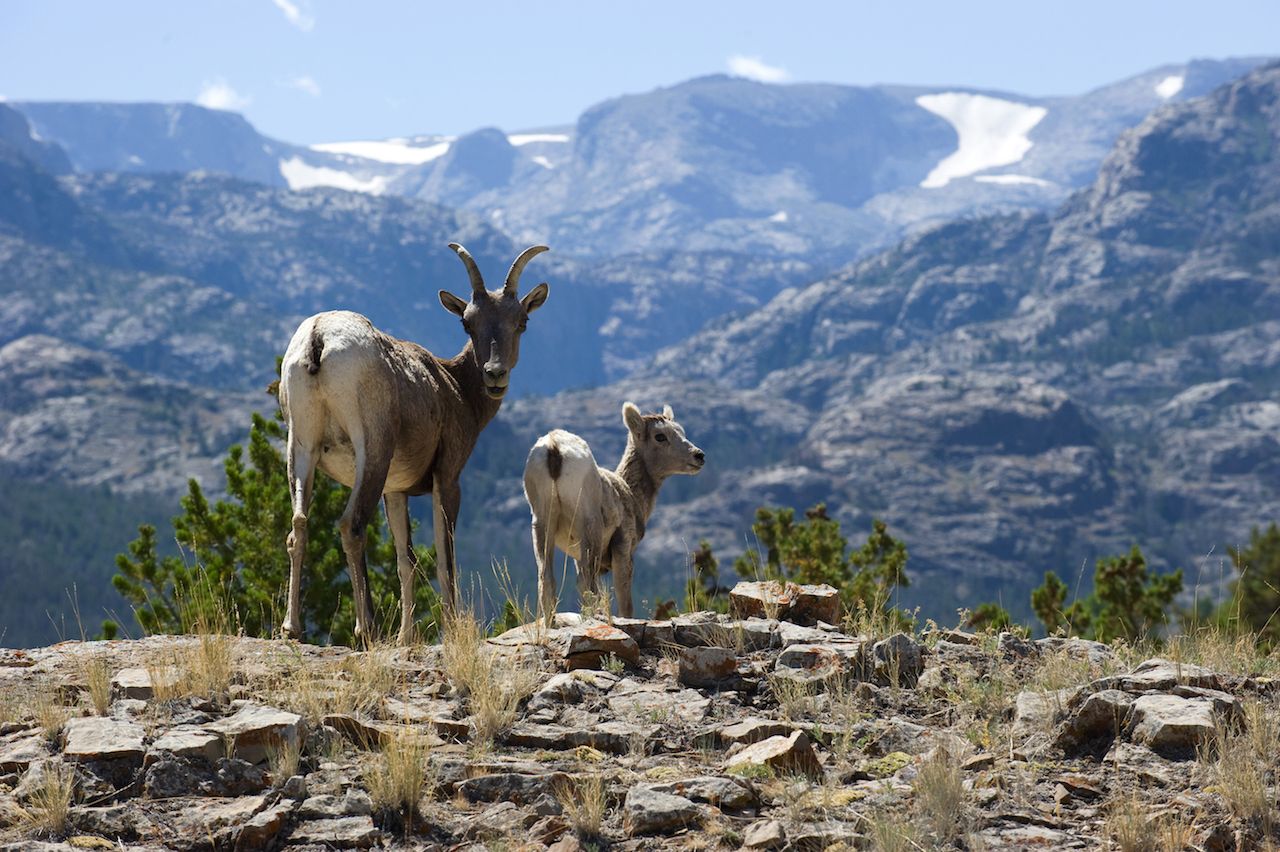
Photo: Steve Price/Shutterstock
When: Year round
Where: Open grassy spaces; spot them on the slopes of Mount Washburn and along Dunraven Pass in summer, and year round at Gardner Canyon between Mammoth and the North Entrance.
Numbers: 421 in the northern Yellowstone area; 197 within the park itself
Bighorn sheep are often mistaken for goats by accident, and in truth, the females do bear more than a passing resemblance to a domestic goat. But these are sheep alright. Both sexes grow horns, the rams’ sometimes curling a full 360 degrees. And like counting the rings on a tree to determine its age, it’s possible to roughly calculate the years of a bighorn from its major horn grooves.
Sheep are sociable animals, and their flocks can often be seen grazing in groups of 10-50. In summer, the rams leave the ewes and young ones and come back in fall for the rut, when they can be seen fighting for up to 25 hours over one ewe. Look out for the lambs from late May to early June.

